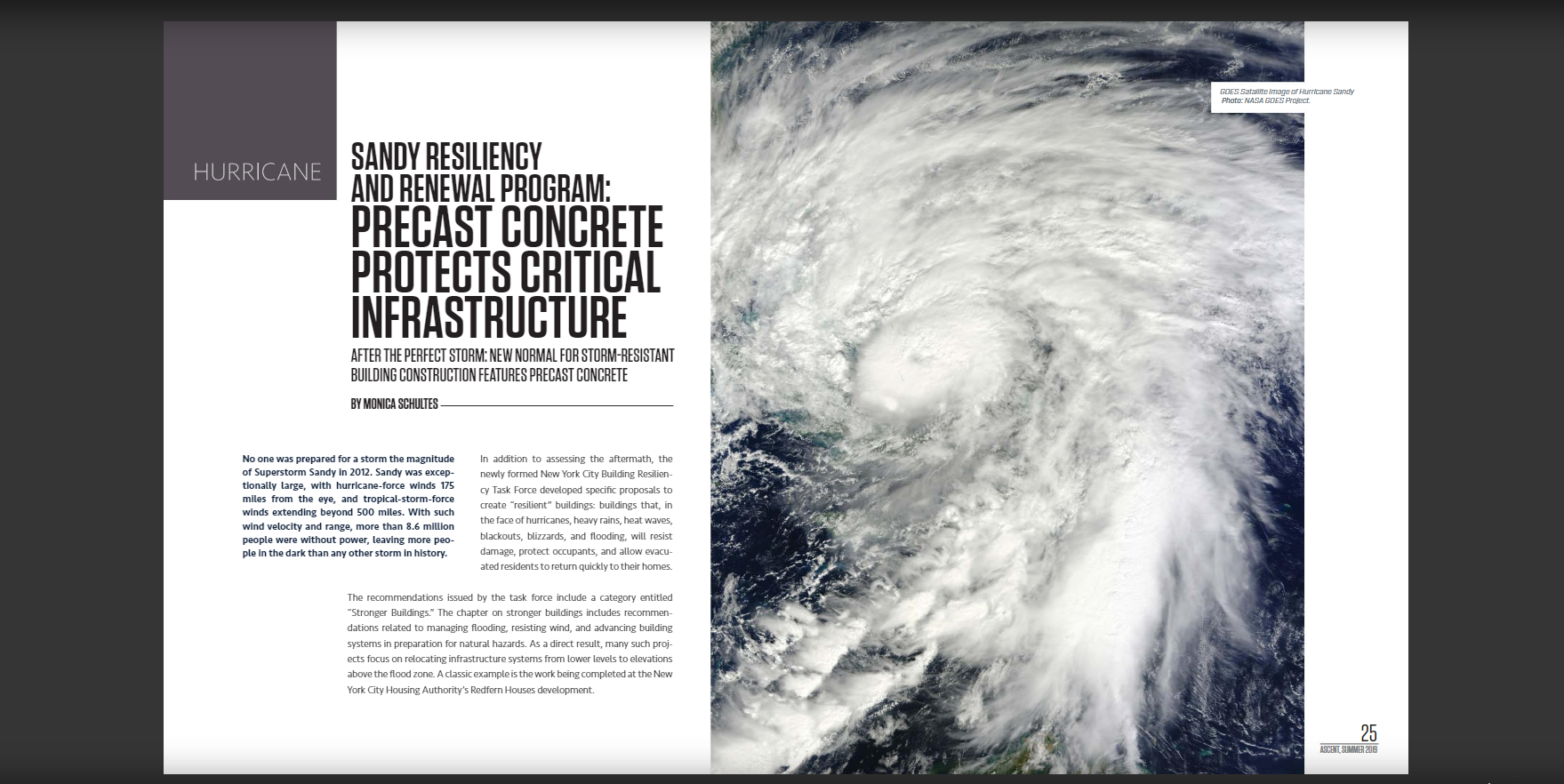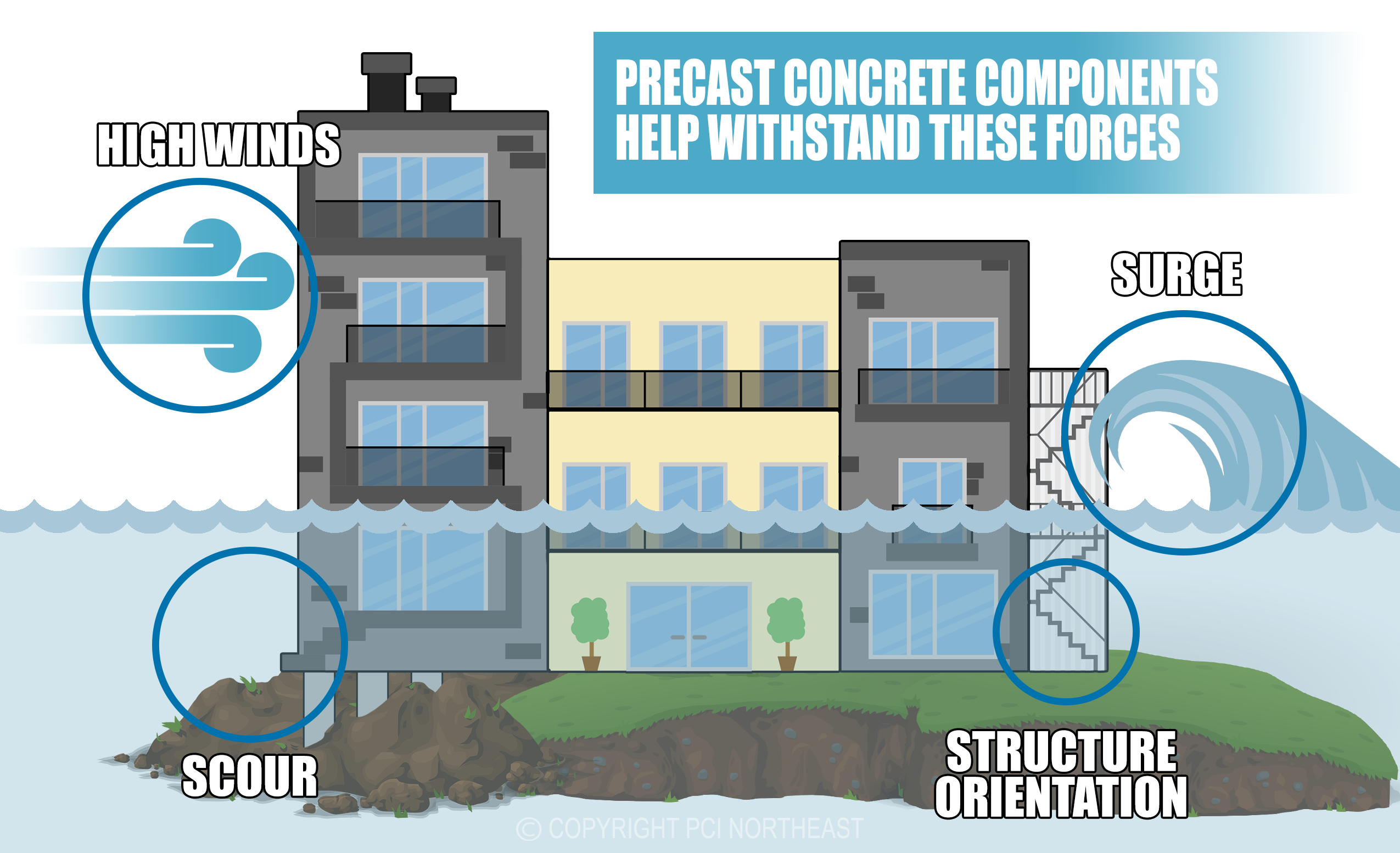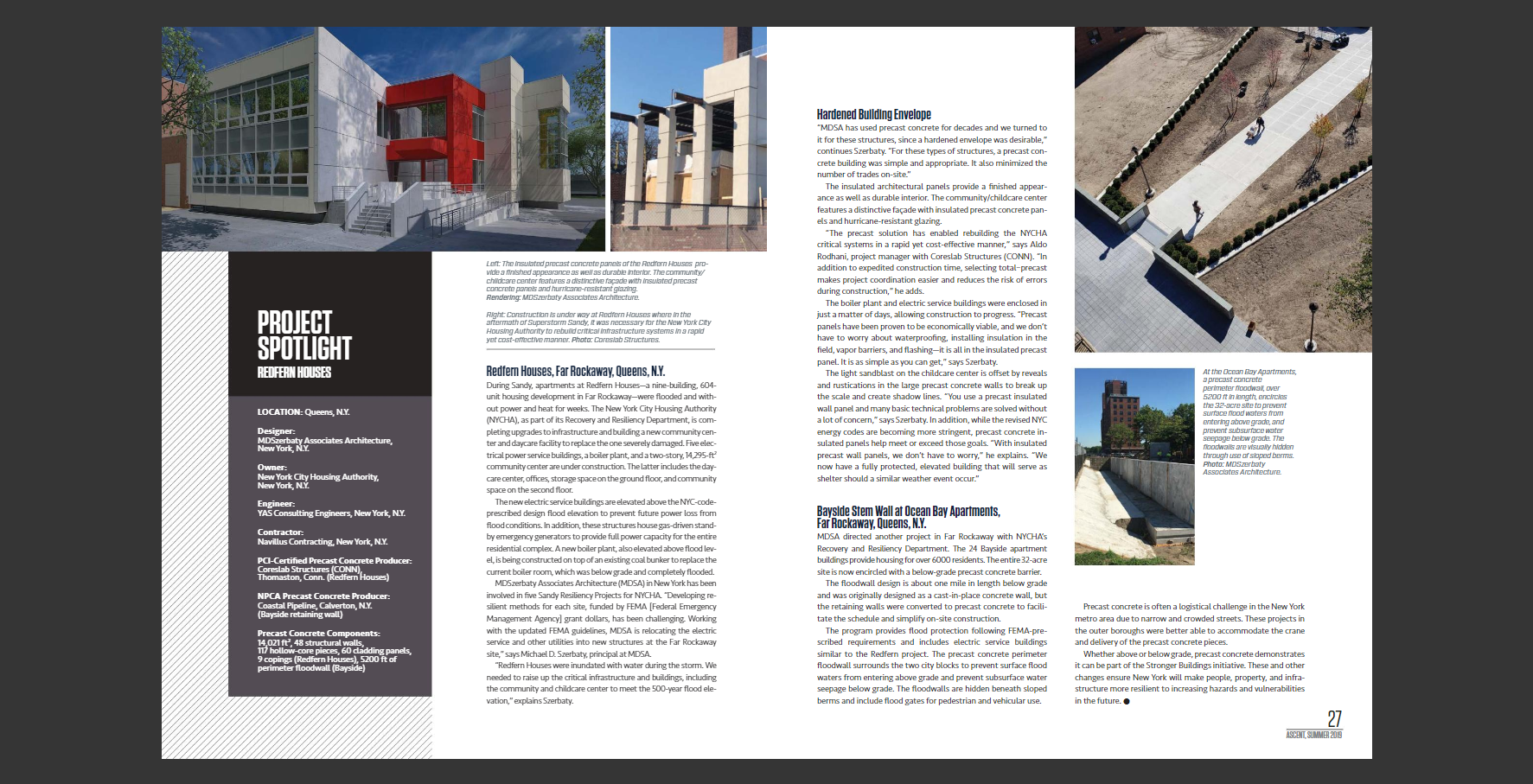The argument regarding the effects of climate change rages on with no end in sight but one thing appears clear...the number of storms and the intensity of storms appears to be increasing. This is where precast can fill the gap.
If recent history has shown us anything, it has shown the types of structures that can and cannot stand up to the wrath of a major hurricane. The now iconic image of the “Sand Palace” in Mexico Beach is a testament to the strength of the age old product concrete. Standing on prestressed concrete piles and supported by prestressed concrete beams of varying lengths, that infamous house stood its ground while the city of Mexico Beach crumbled to pieces around it.
The destruction of Hurricane Sandy highlighted in the Summer 2019 issue of PCI’s Accent magazine shares the common tales told in the aftermath of a ferocious storm.

The powerful nature of storms and what is required to produce a sustainable storm resistant product is something PCI has been studying for decades through impact testing of prestressed precast concrete products. As seen in the video below, during high intensity storms the wind transforms unsecured objects into projectiles that are capable of penetrating structures of materials such as vinyl and wood. A wood and even a masonry structure is no match for a piece of flying debris whereas a concrete structure acts as a shield of armor against the forces of Mother Nature.
The Problem With Storms
 High Winds:
High Winds: Relentless high velocity winds undermine the stability of a structure and send debris pummeling against the exterior of structures.
Fast moving rising water: Water erodes conventional foundations where precast concrete addresses these issues by the very nature of its composition. Concrete is inherently able to withstand abuse of all types. Prestressed precast concrete piles driven deep into the soil are designed handle the velocity of moving water as well as the impacts of marine salts. From Departments of Transportation to FEMA, the sustainability and durability of precast concrete meets, but most often exceeds, the standards called for by engineers and designers.
Check out the Storm Resistance resources on the PCI Northeast website to see the specifics of how precast protects against these extreme weather events. Also take advantage of many downloadable design aids under Technical Resources.
Take for instance the stranding of residents in the Redfern Housing Complex in Queens, NY during Hurricane Sandy. People were trapped without power for days. As a result, the aftermath of the storm brought forth greatly improved strategies to preserve power and maintain safety utilizing tough FEMA standards alongside hurricane resistant glass and precast concrete panels on a beautiful and functional Child Care & Community Center that can house the residents of the Redfern complex in severe weather emergencies.

Out of tragedy almost always comes change. The change in attitude toward building with sustainable and resistant materials is long overdue. The nation’s buildings and communities should be more resilient so they can rapidly recover when disaster strikes. Creating structures that preserve both health and wealth is a shift in thinking and planning that benefits everyone.